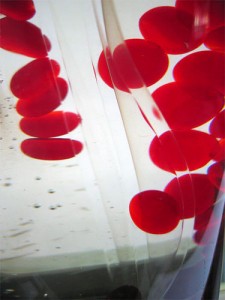Constant fatigue, dizziness, and brain fog may be a sign that you’re suffering anemia, either from vitamin B12 deficiency, low iron, or one of many other factors that cause your red blood cell supplies to dip to dangerously low levels. Listed below are some of the major types of anemia, including pernicious anemia, and some of the risk factors involved.
Please note: The following information is not medical advice; if you suspect you suffer from anemia, then please speak to a physician immediately.
What is anemia?
Basically, anemia is a set of conditions that occur when your body doesn’t have a healthy supply of red blood cells. Anemia can occur from blood loss, exposure to toxins, autoimmune illness, or vitamin deficiencies, such as low vitamin B12 or iron.
Overall, there are over 400 types of anemia, all of which can be broken down into three categories:
•Anemia caused by loss of blood, such as following an injury or complications during pregnancy
•Anemia caused by depleted red blood cells, either as a result of slowed production or deformed blood cells (such as with pernicious anemia)
•Anemia caused by damaged red blood cells
What causes anemia?
Different types of anemia are categorized according to their cause. For example, pernicious anemia is caused by low levels of vitamin B12, and folate deficiency anemia is caused by insufficient folic acid.
Shocking Must-See Video on Vitamin B12 Deficiency Crisis
The many types of anemia include:
•Pernicious anemia, a type of megaloblastic anemia, which occurs when the body produces large, irregularly shaped red blood cells that are unable to deliver oxygen. This used to be considered a fatal condition, but thanks to the discovery of vitamin B12 supplementation, the mortality rate associated with pernicious anemia has dropped considerably, although there are still rare cases of infants failing to thrive as a result of unaddressed vitamin B12 deficiency in the mother while pregnant or nursing.
•Iron deficiency anemia symptoms occur because your body is not getting enough iron, an essential mineral for producing hemoglobin. Increasing your dietary or supplemental intake of iron is necessary in order to reverse symptoms of fatigue, dizziness, and loss of concentration.
•Chronic disease anemia results from a chronic condition interfering with red blood cell production; examples include anemia associated with Crohn’s disease, HIV/AIDS, cancer, and rheumatoid arthritis.
•Anemia from blood loss can result from excessively heavy menstruation, childbirth complications, severe injury, or ulcers.
•Aplastic anemia is an extremely rare condition that occurs when your bone marrow is not able to produce red blood cells; this is a fatal type of anemia that may result from autoimmune disorders, infections, or dangerous drug interactions.
•Sickle cell anemia is a genetically-inherited condition, and results from deformed red blood cells that are unable to thrive.
•Bone marrow disease anemia happens when red blood cell production in the bone marrow either slows down, or comes to a complete halt. Illnesses associated with bone marrow disease are leukemia, multiple myeloma, and lymphoma.
Find out how anemia is diagnosed, treated, and prevented in our next installment.
Your turn!
Do you have any questions or suggestions? Please leave your comments below.
Share with your friends!
If you found this article helpful, then please share with your friends, family, and coworkers by email, twitter, or Facebook.
Like this? Read more:
Pernicious Anemia and Vitamin B12 Deficiency: Which Causes Which?
Can Vitamin B12 Repair Nerve Cells?
Is it Pernicious Anemia or Multiple Sclerosis? Part 1
Sources:
Understanding Anemia: Types, Symptoms and Treatment
Anemia Causes, Types, Symptoms, Diet, and Treatment
Image courtesy of rpongsaj/flickr


